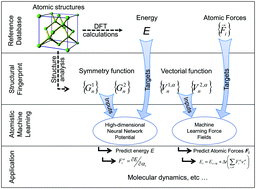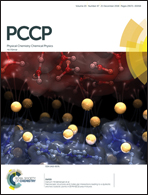Comparison of different machine learning models for the prediction of forces in copper and silicon dioxide†
Abstract
Recently, the machine learning (ML) force field has emerged as a powerful atomic simulation approach because of its high accuracy and low computational cost. However, there have been relatively fewer applications to multicomponent materials. In this study, we construct and compare ML force fields for both an elemental material (Cu) and binary material (SiO2) with varied inputs and regression models. The atomic environments are described by structural fingerprints that take into account the bond angle, and then, different ML techniques, including linear regression, a neural network and a mixture model method, are used to learn the structure–force relationship. We found that using angular structural fingerprints and a mixture model method significantly improves the accuracy of ML force fields. Additionally, we discuss an effective structural fingerprint auto-selection method based on the least absolute shrinkage and selection operator and the genetic algorithm. The atomic simulations conducted for ML force fields are in excellent agreement with ab initio calculations. As a result of the simulation with our ML force field for the structural and vibrational properties of amorphous SiO2, simulated annealing with a slow cooling rate improved the ring statistics in the amorphous structure and the phonon density of states.



 Please wait while we load your content...
Please wait while we load your content...